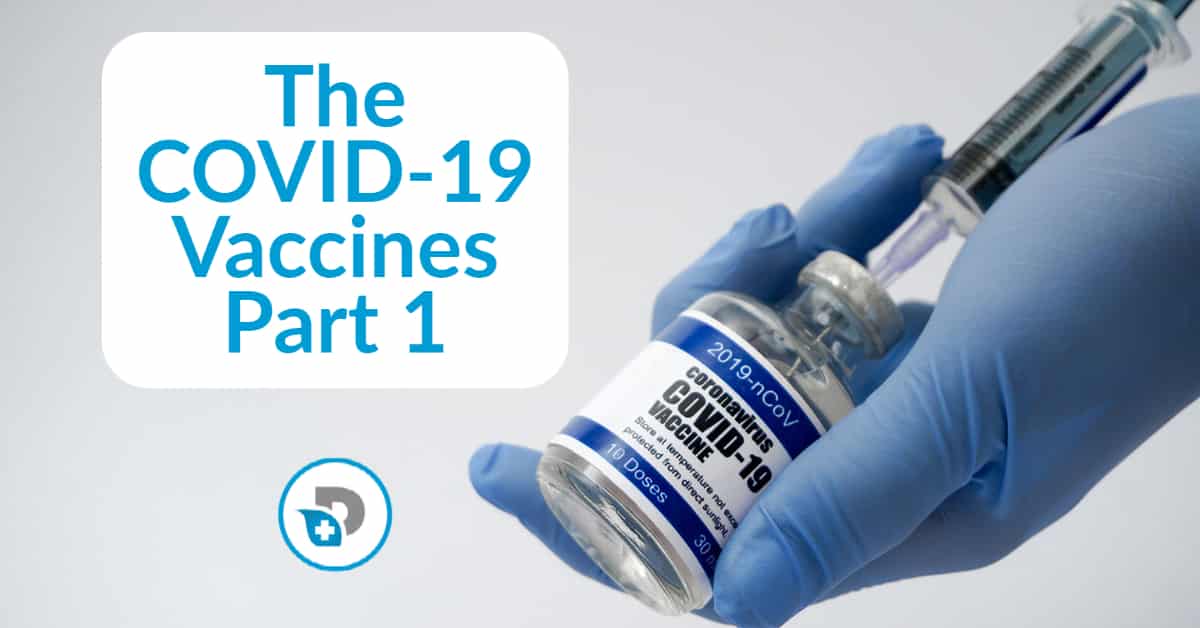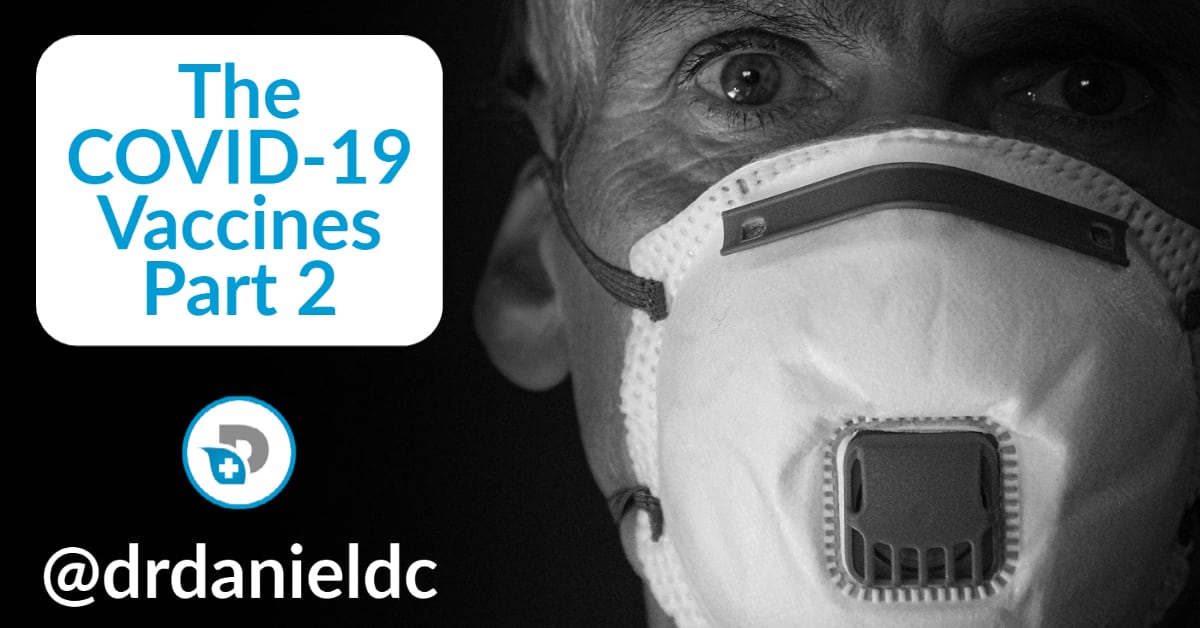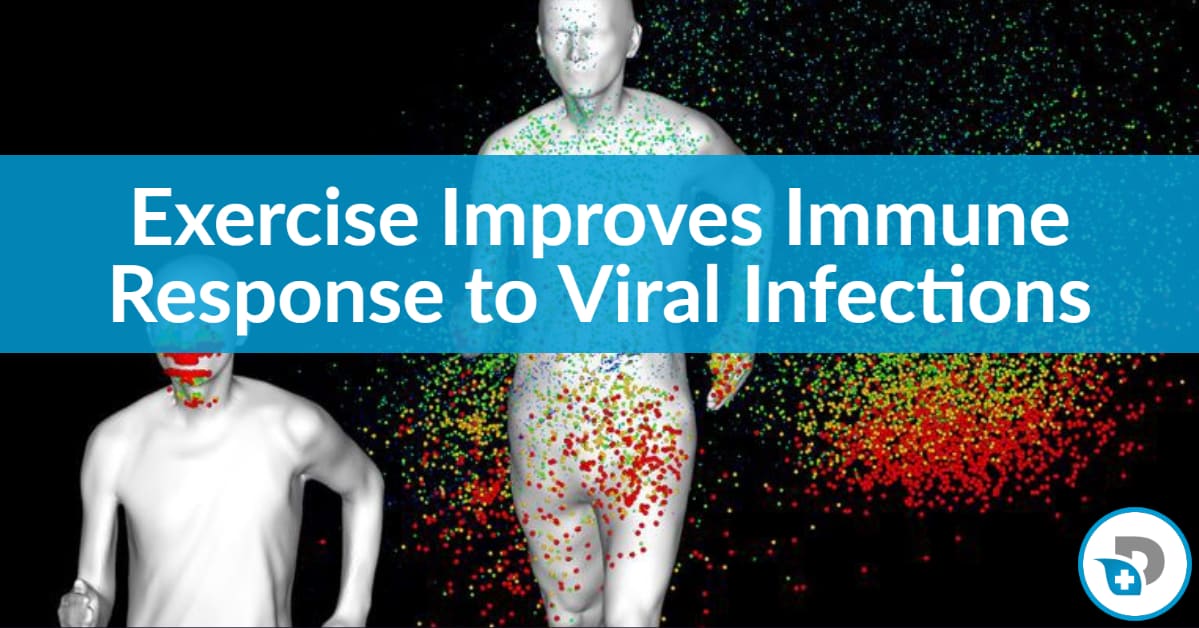
The COVID-19 Vaccine Part 1
-
by Dr. Daniel
- Published on

Currently we have two COVID-19 Vaccines available: the Pfizer-Biontech and Moderna vaccines.
These new vaccines work similarly to traditional vaccines such as the influenza vaccine, yet have major differences as well.
They are the first vaccines ever approved for emergency use that employ an information-coding molecule called messenger RNA (mRNA) to generate an immune response to microbial pathogens (viruses, bacteria, parasites, etc).
A key difference in mRNA based vaccines is that they cause our cells to produce parts of the virus, which then elicits an immune response to those specific parts.
In this article (Part 1 of a 3 Part series) we will discuss ingredients, how mRNA vaccines work and a few unknowns surrounding the new mRNA based vaccines.
COVID-19 Vaccine Ingredients
When I read about the COVID-19 vaccine ingredients, it sounds like processed food: a mixture of salt, fat, sugar and genetic modification.
Pfizer-BioNTech COVID-19 Vaccine Ingredients:
mRNA – Also known as messenger ribonucleic acid, mRNA is the only active ingredient in the vaccine.
The mRNA molecules contain the genetic material that provide instructions for our body on how to make a viral protein that triggers an immune response within our bodies.
The immune response causes our bodies to make the antibodies needed to protect us from getting infected if exposed to the coronavirus.
Salts – The following salts are included in the Pfizer vaccine.
- potassium chloride
- monobasic potassium phosphate
- sodium chloride
- dibasic sodium phosphate dihydrate
Fat (lipids) – The following lipids are in the new COVID vaccine.
Their main role is to protect the mRNA and provide a “greasy” exterior that helps the mRNA slide inside the cells.
- (4-hydroxybutyl)azanediyl)bis(hexane-6,1-diyl)bis
- (2-hexyldecanoate), 2 [(polyethylene glycol)-2000]-N,N-ditetradecylacetamide
- 1,2-Distearoyl-snglycero-3- phosphocholine cholesterol
I tried providing Material Safety Data Sheets for the above compounds but couldn't find them.
Sugar – Basic table sugar, also known as sucrose, can also be found in the new COVID vaccine.
This ingredient helps the molecules maintain their shape during freezing.
Moderna COVID-19 Vaccine Ingredients:
mRNA – Like the Pfizer BioNTech vaccine, Moderna’s also uses mRNA technology to build antibodies against COVID-19.
Lipids – The Moderna vaccine also requires lipids to help deliver the mRNA to the cells.
- SM-102
- 1,2-dimyristoyl-rac-glycero3-methoxypolyethylene glycol-2000 [PEG2000-DMG]
- cholesterol
- 1,2-distearoyl-snglycero-3-phosphocholine [DSPC]
The remaining ingredients (below), including acids, acid stabilizers, salt and sugar all work together to maintain the stability of the vaccine after it’s produced.
Acids
- Acetic acid
Acid Stabilizers
- Tromethamine & Tromethamine hydrochloride
Salts
- Sodium acetate
Sugar
- Sucrose
How Conventional Vaccines Work
At the heart of every vaccine is a component called an antigen.
An antigen is a protein that's identical to proteins contained within a virus we are trying to protect ourselves from.
When a vaccine is shot into your arm, it draws the attention of front-line immune cells called dendritic cells.
Widely distributed throughout the body's tissues (notably under the skin and in or near muscle tissue), dendritic cells sit around waiting for trouble.
As soon as these dendritic cells sense an antigen (suggesting an invading virus is present), they chew it up into little pieces and display these viral bits on their surfaces like battle trophies.
From here, a group of diverse immune cells launches a coordinated attack on anything possessing features identical to those antigenic battle trophies.
This is how you become immune.
It does not guarantee a prevention of infection, but increases the chances of dealing with an infection with less severity.
How the New mRNA COVID-19 Vaccines Work
Instead of directly injecting the viral antigen into your arm, these vaccines carry copies of the recipe for making the antigen, as mRNA, a molecule that stores the genetic information.
mRNA Based Vaccines are the New Kids on the Block and may provide amazing benefits for many conditions, not simply COVID-19.
That said, it took less than a year for an effective vaccine for SARS-CoV-2, the coronavirus that causes COVID-19, to gain Food and Drug Administration emergency use approval.
Please note the COVID-19 vaccines are approved for EMERGENCY USE, not actually approved by the WHO or FDA to prevent COVID-19.
Reading the inserts to both vaccines, including Pfizer-Biontech and Moderna, you’ll find the following statements:
- The Pfizer-BioNTech COVID-19 Vaccine is a vaccine and may prevent you from getting COVID-19. There is no U.S. Food and Drug Administration (FDA) approved vaccine to prevent COVID-19.
- The Moderna COVID-19 Vaccine is a vaccine and may prevent you from getting COVID-19. There is no U.S. Food and Drug Administration (FDA) approved vaccine to prevent COVID-19.
Keep in mind that although the new vaccine is approved for emergency use, neither vaccine is approved by the FDA to prevent COVID-19 and neither is proven to prevent it.
Moving on..
Like its close and more popular cousin DNA, mRNA is a string of units representing the genetic code that all living cells use as instructions for producing their proteins.
The newly licensed COVID-19 vaccines contain identical mRNA strands all coding for a critical section of the coronavirus's spike protein.
This protein is easy for the immune system to attack because it sits on the virus's outer surface.
The spike protein was selected because it's a primary mechanism for how the virus infiltrates our body.
Vaccine manufacturers and global authorities state that the vaccine cannot cause problems because it only contains instructions for the spike protein and not the entire viral genome.
That's all great, but what about studies showing spike proteins can cause damage to the host (your body)?
More on that in Part 2 of this series!
The vaccine's mRNA strands are hidden inside of nanoscale fat globules, which keeps our immune system from flipping out and going medieval on our tissues.
This is important because your immune system is not used to seeing mRNA just floating around outside of cells.
If your immune system catches mRNA in its ‘hood, its first thought is “WTF! Hold my drink bruh, that genetic material is out of place so shit's about to get real!”
This poses two potential problems with mRNA vaccines:
- We’re assuming the mRNA will be delivered to its target site before being destroyed by our own immune system.
- Unintended immune reactions may occur if our immune system becomes hyper-responsive.
Unknowns You Should Know
First, let’s just put this out in the open:
Will mRNA based vaccines change my DNA?
No. mRNA is not DNA and can’t combine with DNA to change the genetic code.
The genes of cells that ingest vaccine mRNA are not altered.
The mRNA delivered by a vaccine needs only to get to the cytoplasm.
Even if the vaccine mRNA got into the nucleus, our cells could not convert the mRNA into the DNA that our genes are made of.
All that said, if mRNA made it into a neuron or nerve cell, it can actually persist longer than expected.
And if that mRNA becomes damaged, it can pose a problem, such as damaging those neurons.
Will the vaccine prevent infection?
We don’t know, but most experts including Dr. Fauci say “No.”
And the experts have never been wrong, right?
While the COVID-19 vaccines are effective in preventing severe disease (at least in symptomatic people), their ability to block transmission remains unknown.
This is also true for all the other vaccines used for decades.
And it's why no vaccine is 100% effective. They only reduce severity of illness.
Already, we find that people who have received the COVID-19 vaccine could still pass the virus on to others! That's interesting.
Therefore, the authorities have stated that people who get the vaccine should still practice safety measures including social distancing, practicing personal hygiene, etc.
Whether you get the vaccine or natural immunity, the big bad virus has to make its way into the population. The sooner that happens, the better.
Another unknown is that we’re assuming the free mRNA reaches its destination.
Given the lack of information on symptomatic and asymptomatic individuals who received the COVID-19 vaccine in clinical trials, we just do not know the answer to this.
So there's a possibility that the effectiveness is simply the natural immune response that we've witnessed throughout the entire pandemic – some people get the virus and deal it with appropriately, others don't.
In addition, new research shows that NSAIDs (Acetaminophen, Ibuprofen, Naproxen, etc.) reduced both antibody and inflammatory responses to SARS-CoV-2 infection in mice.
This means that anyone taking NSAIDs prior, during or immediately after a COVID-19 vaccine may render it less effective.
Remember, mRNA is highly unstable.
If NSAIDs can reduce the effectiveness of mRNA vaccines, what else can impact it?
Previous studies suggest that medications, especially steroids and anti-inflammatory medications, can affect your response to the vaccine.
In addition, host factors (i.e. the state of health of the human getting vaccinated) impact vaccine effectiveness.
If someone gets a vaccine and they have certain host factors including their age, gut health, immune history, body composition, etc, it could impact vaccine effectiveness.
Ironically, those individuals with the above mentioned host factors are the most susceptible.
Therefore, the greatest therapeutic we have against COVID-19 or any other pathogen is building our health.
Another unknown is the unintended or adverse effects of mRNA vaccines themselves.
We know that traditional vaccines have unintended and adverse effects.
We know nothing about the unintended and adverse effects of the new mRNA based vaccines.
This is where things get dicey.
Non-specific effects result from vaccines.
This includes the production of cross-reactive antibodies, activation of pre-existing effector or memory cells, and can contribute to beneficial or unfavorable consequences.
In an article titled “An Evidence Based Perspective on mRNA-SARS-CoV-2 Vaccine Development”, the authors state:
“It is important to clearly understand the potential risks of this type of mRNA-based vaccine, which include local and systemic inflammatory responses, the biodistribution and persistence of the induced immunogen expression, possible development of autoreactive antibodies and toxic effects of any non-native nucleotides and delivery system components.”
Another article released by the Penn Medicine Center for Evidence based Practice found:
“The current evidence base on messenger RNA (mRNA) vaccines is made up entirely of small early-stage trials, nearly all of which examined only short-term outcomes. They lack sufficient power for testing the statistical significance of most results, and for assessing the risk of serious but uncommon adverse events.”
What these scientists are saying is that vaccines themselves have an inherent risk of causing inflammatory reactions that negatively impact health and we have not properly assessed this risk.
It really comes down to individuals having to weigh the risk and reward of getting the vaccines or not.
The risk is getting infected with SARS-CoV-2 and not being able to handle it appropriately.
Of course, the biggest risk factor of not being able to handle the virus is poor health.
The reward is developing immunity to the virus, so if and when you do get infected, it's not as severe.
The problem is the unknowns mentioned above need to be factored in, and you need to be willing to accept those unknowns.
I am not against vaccines.
I am against the threats of iatrogenesis, which has become one of the major threats to our health.
In part 2 of The COVID-19 Vaccine, I’ll share the history of unintended effects of vaccines, connections between those unintended consequences and the pathophysiology of COVID-19 and COVID-19 mRNA vaccines.


